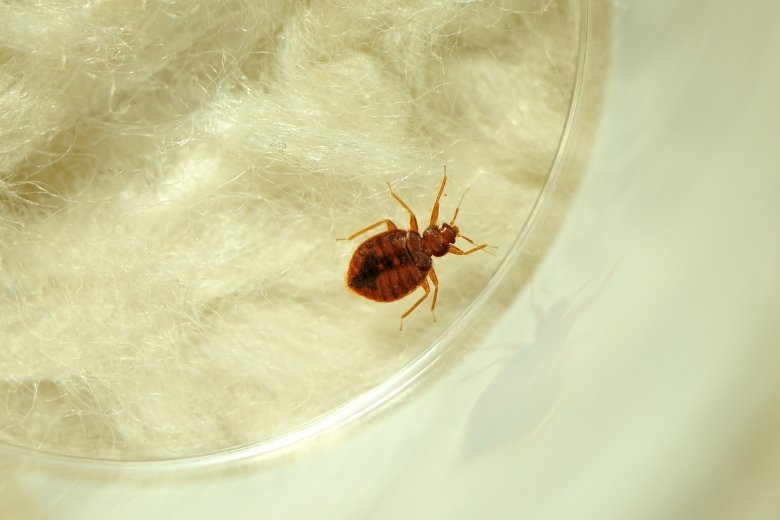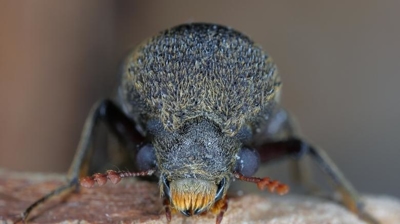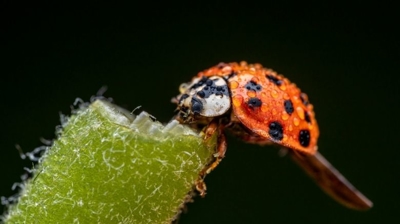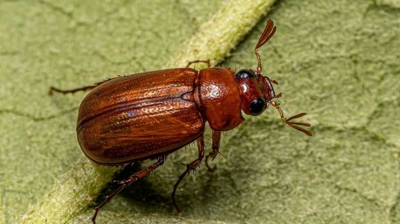
Bed Bug Control Services

Bed Bugs
Bed bugs (Cimex lectularius) may be small and elusive, but they pose a range of harmful effects that extend beyond mere nuisance. These bugs can have a significant impact on both health and quality of life. Here are some of the ways bed bugs can be considered harmful:
- Skin Reactions and Bites: Bed bug bites commonly cause itchy, red welts or raised bumps, often in a linear or clustered pattern. While not everyone reacts visibly, many individuals develop symptoms such as inflammation and swelling, blister-like eruptions, and secondary skin infections caused by excessive scratching (e.g., impetigo, cellulitis).
- Allergic Reactions: Some people may experience moderate to severe allergic reactions to bed bug bites. Symptoms can include urticaria (hives), anaphylaxis (extremely rare but potentially life-threatening), and asthma exacerbation from allergenic particles (shed skins, feces).
- Potential Disease Vectors: Although bed bugs are not currently confirmed as major disease vectors, some studies suggest they may be capable of harboring pathogens such as Hepatitis B, Chagas disease (Trypanosoma cruzi), and Methicillin-resistant Staphylococcus aureus (MRSA). However, there is no conclusive evidence of active disease transmission to humans under natural conditions.
- Anxiety and Stress: Infestations often result in chronic stress and anxiety, driven by the difficulty of controlling the problem and the fear of being bitten during sleep.
- Sleep Disruption and Insomnia: The nocturnal feeding habits of bed bugs can lead to persistent sleep disturbances, which in turn affect cognitive performance, mood, and overall mental health.
- Psychological Trauma: Repeated infestations or prolonged exposure can lead to delusional parasitosis or post-traumatic stress disorder (PTSD)-like symptoms in extreme cases, where individuals become obsessed with the idea of bugs even after they’re gone.
- Stigma and Social Isolation: There is a strong stigma attached to bed bug infestations, which can result in embarrassment, social withdrawal, or strained relationships. People may avoid visiting affected individuals or allowing them into their homes.
- Property Damage: While bed bugs do not chew or destroy property like termites, infestations can necessitate the discarding of mattresses, upholstered furniture, and personal belongings, leading to financial loss and property devaluation.
- Financial Burden: In addition to treatment costs, expenses can include disposal and replacement of infested furniture, laundering and cleaning, and temporary relocation or lost income due to inability to use a space.
- Infestation in Public Facilities: Hospitals, hotels, schools, and public transportation systems can experience outbreaks, leading to widespread disruption, potential liability issues, and significant remediation efforts.
While bed bugs are not known to transmit diseases in the way mosquitoes or ticks do, their presence is nonetheless medically and economically significant. Their bites can lead to discomfort, secondary infections, and allergic reactions. The psychological toll and financial strain of dealing with an infestation make them a serious pest that requires swift, professional intervention.
Learn more: What Do Bed Bugs Eat? || Bed Bug Bites || What Do Bed Bugs Look Like? || What Do Bed Bug Droppings Look Like?
Bed Bug Removal
Getting rid of bed bugs is crucial for several reasons, both for health and for quality of life.:
Health Risks
- Bites and Skin Irritation: Bed bug bites can cause itchy, red welts. For some people, bites can lead to allergic reactions that are more severe, causing intense itching, swelling, and even secondary infections from scratching.
- Sleep Disruption: Bed bugs are nocturnal and feed at night. Their presence can cause anxiety, insomnia, and general sleep disturbances, which can impact overall health, mood, and productivity.
- Potential for Infection: Scratching bites can break the skin, increasing the risk of bacterial infections such as impetigo, cellulitis, or staph infections.
Mental and Emotional Stress
- Anxiety and Stress: Knowing that your home is infested can create chronic stress, embarrassment, and fear, particularly in children or vulnerable individuals.
- Psychological Impact: Persistent infestations can lead to paranoia, depression, or a feeling of loss of control over your living space.
Rapid Infestation and Spread
- Bed bugs reproduce quickly. A small, undetected infestation can multiply exponentially in a few weeks, making eradication much more difficult and costly.
- They can easily spread to other rooms, neighboring apartments, or homes through furniture, clothing, or luggage, creating broader infestations.
Financial and Property Concerns
- Infestations can damage furniture, mattresses, bedding, and personal belongings.
- Treating bed bugs can become very expensive if the problem is allowed to escalate, especially if professional extermination is delayed.
Reduced Quality of Life
- Infestations can affect daily comfort and peace of mind.
- The presence of bed bugs can affect relationships, social life, and even the ability to host guests, due to fear of spreading the infestation.
Bed bugs are not just a nuisance—they are a health and safety concern that can escalate quickly. Early intervention with professional pest control is essential to protect your home, your health, and your peace of mind.
Learn more: How To Get Rid Of Bed Bugs
Bed Bug Control
Hiring our professional exterminators for a bed bug infestation is highly recommended because bed bugs are notoriously difficult to eliminate without specialized knowledge, equipment, and treatment methods. Here’s why our professional intervention is the best choice:
- Accurate Identification: Many insects resemble bed bugs in appearance (e.g., carpet beetles, bat bugs, fleas). Our professionals can quickly confirm the presence of actual bed bugs and assess the severity of the infestation. Misidentification can lead to ineffective treatments and wasted time or money.
- Comprehensive Inspection: Our exterminators inspect hiding spots that homeowners often overlook: mattress seams, bed frames, furniture, baseboards, electrical outlets, and even wall voids. Our professionals can locate all affected areas to ensure treatment targets the entire infestation, not just visible bugs.
- Effective Treatment Methods: Bed bugs are resilient to many over-the-counter products. Our professionals use advanced tools and treatments to eliminate even resistant strains of bed bugs.
- Safety: Bed bug pesticides can be toxic if misapplied. Our professionals are trained to apply chemicals safely, protecting your family, pets, and environment. We also know how to minimize chemical exposure while maximizing effectiveness.
- Prevention of Reinfestation: Our professionals advise on steps to prevent bed bugs from returning, including proper encasements, decluttering, sealing cracks, and monitoring. We also schedule follow-ups to ensure all bed bugs and eggs are eliminated, reducing the risk of a recurring infestation.
- Time and Stress Management: Bed bug infestations are stressful, and DIY methods can be labor-intensive and ineffective. Hiring our exterminators provides peace of mind and quicker, more reliable results, saving homeowners both time and frustration.
- Warranty and Support: We provide a re-treatment warranty, so if bed bugs return within a certain period, so do we. This gives added security that the problem will be fully resolved.
Bed bugs are not only difficult to eradicate but can spread quickly if treatments fail. Our professional exterminators ensure thorough inspection, targeted and safe treatment, and effective prevention strategies—something most DIY approaches cannot guarantee.
Bed Bug Exterminators
Hiring our local exterminators to handle a bed bug infestation offers critical advantages that go beyond DIY treatments or non-local services:
Expertise with Local Infestation Patterns
- Understanding regional bed bug behavior: Bed bugs in the area have specific hiding habits and resistance to certain insecticides. Our local exterminators have firsthand experience with these patterns.
- Knowledge of local building types: Homes and apartments, for instance, often have construction features—like wall voids, baseboards, or attic access—that are common harborage sites. Our local professionals know where to look.
Fast and Targeted Response
- Rapid containment: Bed bugs reproduce quickly. Our local exterminators can respond quickly to stop the infestation before it spreads to other rooms or neighboring units.
- Efficient treatment planning: Our local professionals tailor our treatment schedules and methods to the specific size and location of your infestation, reducing wasted time and effort.
Access to Professional-Grade Products and Tools
- Stronger and safer treatments: Many bed bug sprays and heat treatments available to the public are less effective than professional-grade solutions. Our local exterminators have access to treatment methods that are highly effective and applied safely.
- Integrated methods: Our professionals often use a combination of treatments—chemical, mechanical (vacuuming, steaming), and preventive measures (encasements, interceptors)—to ensure complete eradication.
Long-Term Prevention
- Follow-up inspections: Our local exterminators return for follow-ups to confirm the infestation is fully eliminated, which is crucial because even a few surviving bed bugs can restart the problem.
- Education and prevention: We can advise on how to prevent re-infestation through proper furniture placement, mattress encasements, and monitoring, tailored to your specific home environment.
Reduced Risk and Liability
- Minimized chemical exposure: Using treatments incorrectly can expose your family, pets, or belongings to harmful chemicals. Our professionals know the safe and precise application.
- Less property damage: Our local experts can treat bed bugs without causing unnecessary damage to walls, furniture, or flooring, unlike some aggressive DIY methods.
Cost Efficiency in the Long Run
- Avoiding repeated treatments: DIY attempts often fail or only partially eliminate bed bugs, leading to multiple treatments and higher cumulative costs. Our local professionals maximize the chances of a single, effective treatment.
- Protecting property value: Preventing bed bug spread avoids damage to furniture and potential complaints from tenants or neighbors, especially in multi-unit buildings.
Hiring our local exterminators ensures a fast, precise, and safe elimination of bed bugs, reduces long-term costs, and significantly lowers the risk of recurrence. Our local knowledge and professional tools are critical for a permanent solution rather than a temporary fix.
Bed Bug Treatments
Our professional bed bug exterminators often use a combination of treatment methods to fully eradicate an infestation. Bed bugs are notoriously resilient, so a multi-faceted approach is usually required. The main treatment methods include:
Chemical Treatments (Insecticides)
Our exterminators often incorporate EPA-registered insecticides specifically formulated for bed bugs into . These may include:
- Pyrethroids: Commonly used due to their effectiveness against adult bed bugs, but resistance can occur in some populations.
- Neonicotinoids: Target the nervous system of bed bugs, useful against pyrethroid-resistant strains.
- Insect Growth Regulators (IGRs): Disrupt bed bug development, preventing eggs from hatching and nymphs from maturing.
- Desiccant Dusts (e.g., Diatomaceous Earth or Silica Gel): Physically dehydrate bed bugs, effective in cracks, crevices, and voids where sprays may not reach.
Chemical treatments are often applied in combination with other methods to improve results, especially in heavily infested areas.
Heat Treatments
Bed bugs and their eggs die at temperatures above 118°F (48°C). Our professional heat treatments involve:
- Whole-room heat treatments: Specialized equipment raises the temperature of a room or entire home to lethal levels, often sustained for several hours.
- Localized heat treatments: Portable heat chambers or steamers target infested furniture, mattresses, and carpets.
Heat treatment is highly effective because it penetrates into hiding places and kills all life stages simultaneously, reducing the need for repeated chemical applications.
Steam Treatments
High-temperature steam (around 212°F / 100°C) can be used to treat furniture, bed frames, mattress seams, baseboards, and other surfaces where bed bugs hide. Steam kills bugs and eggs on contact and is chemical-free, making it useful in sensitive environments.
Encasements and Physical Barriers
- Mattress and box spring encasements: Trap existing bugs inside while preventing new infestations.
- Interceptor cups under bed legs: Prevent bed bugs from climbing onto the bed and monitor ongoing activity.
While these measures do not eliminate bed bugs directly, they are crucial for preventing re-infestation and monitoring treatment efficacy.
Integrated Pest Management (IPM)
Our exterminators follow IPM principles, combining several methods along with:
- Inspection and monitoring: Identifying the extent of the infestation.
- Clutter reduction: Removing items that provide hiding spots.
- Vacuuming and sanitation: Physically removing bed bugs from cracks, furniture, and flooring.
- Follow-up treatments: Scheduling multiple visits to catch any newly hatched bugs.
Our professional exterminators customize our approach based on the severity of the infestation, the environment (residential vs. commercial), and resistance patterns. Complete eradication often requires coordination between chemical, heat, and mechanical methods alongside thorough preparation by the occupants.
Where Are Bed Bugs Found?
Bed bugs are experts at hiding and tend to gravitate toward areas that offer warmth, darkness, and proximity to a food source—namely, human blood. Because of their elusive nature and preference for tight, undisturbed spaces, they can be found in a wide range of locations, though certain places are far more common:
- Mattresses and Box Springs: Most common location due to easy access to a host at night. Check seams, piping, tufts, and labels on mattresses. Box springs often harbor large infestations, especially within the wooden frame or fabric covering.
- Bed Frames and Headboards: Cracks, joints, and screw holes are ideal harborage sites. Upholstered or wooden headboards attached to the wall can conceal clusters.
- Bedding and Linens: Bed bugs do not live inside sheets or blankets but may crawl across them at night. Stains or specks on bedding may indicate activity.
- Nightstands and Dressers: Look inside drawers, underneath the furniture, behind hardware, and in the corners.
- Upholstered Furniture: Couches, recliners, and chairs—especially in the seams, zippers, and under cushions. Bed bugs are often found in living room furniture, especially where people nap or sit for long periods.
- Curtains and Drapes: Particularly if they touch the floor or are near a sleeping area.
- Wall Cracks and Electrical Outlets: Small crevices behind baseboards, picture frames, wall plates, and switch covers. They can travel through wall voids and infest adjacent rooms or units.
- Floorboards and Carpet Edges: Gaps between floorboards, under baseboards, and the tack strip of carpeting near walls.
- Ceiling Fixtures and Smoke Detectors: In severe infestations, bed bugs may move upward and hide in light fixtures, ceiling cracks, or smoke alarms.
- Luggage and Travel Items: Bed bugs are notorious hitchhikers. Check suitcases, backpacks, purses, and laptop bags—especially in the seams and zipper areas.
- Hotels and Motels: Headboards, beds, and upholstered furniture in hotel rooms are high-risk. Always inspect before unpacking.
- Public Transportation: Seats and luggage compartments on buses, trains, airplanes, and ride-shares can harbor bed bugs.
- Movie Theaters and Waiting Rooms: Cushioned seating areas where people remain stationary for extended periods.
- Offices and Schools: While less common, bed bugs can spread from employee belongings or furniture.
- Clothing and Laundry Areas: Piles of laundry, especially dirty clothing, attract bed bugs due to residual body odor and warmth. Laundromats are rarely infested but clothing bags can act as transfer vehicles.
Bed bugs tend to concentrate near areas where people sleep or sit for extended periods, and they prefer tight, dark spaces close to a host. When inspecting for bed bugs, it’s essential to go beyond the bed itself and check all adjacent structures, furniture, and belongings thoroughly.
Learn more: How Do You Get Bed Bugs? || Do Bed Bugs Fly?
Bed Bug Life Cycle
The life cycle of a bed bug is a gradual metamorphosis consisting of three main stages: egg, nymph, and adult. Each stage is dependent on temperature, access to blood meals, and environmental conditions:
Egg Stage
- Location: Laid in cracks, crevices, mattress seams, furniture joints, and behind baseboards or headboards.
- Quantity: A single female can lay 1 to 5 eggs per day. Over her lifetime, she may lay 200 to 500 eggs under favorable conditions.
- Incubation Period: Eggs typically hatch in 6 to 10 days at room temperature (~70–80°F or 21–27°C). Cooler temperatures delay hatching.
Nymph Stage (5 Instars or Developmental Stages)
Each nymph stage is called an instar, and the bed bug must take a blood meal and molt to progress to the next stage.
- Molting: After each blood meal, the nymph sheds its exoskeleton. Five molts are required to reach adulthood.
- Time to Maturity: Under ideal conditions, the nymph stage lasts 5 to 8 weeks. The process can be significantly delayed if blood meals are unavailable or temperatures are suboptimal.
Adult Stage
- Feeding: Adults typically feed every 3 to 7 days.
- Reproduction: Bed bugs reproduce through traumatic insemination, in which the male pierces the female’s abdominal wall to deposit sperm. Females begin laying eggs within 3 to 10 days after mating.
- Lifespan: Under ideal conditions, adults can live 6 to 12 months. Without a blood meal, they may survive several months, though reproductive activity ceases.
Influencing Factors on the Life Cycle
- Temperature: Warmer environments (70–80°F) accelerate development. Cooler temperatures slow or suspend the cycle.
- Food Availability: Access to blood is critical at all stages except the egg. Lack of feeding halts development and can cause mortality over time.
- Humidity: Moderate humidity (~60–70%) supports survival. Extremely dry or damp conditions may increase mortality.
Lifecycle Duration (from Egg to Reproducing Adult)
- Under optimal conditions: Around 4 to 8 weeks.
- Under poor conditions: Can extend to several months.
The bed bug’s life cycle is tightly linked to temperature, access to hosts, and environmental conditions. This life cycle allows for rapid population growth, especially in temperature-controlled environments like homes, apartments, hotels, and dormitories. Understanding each stage is vital for effective identification, inspection, and treatment, as different control strategies may target different parts of the cycle.
Learn more: What Do Bed Bug Eggs Look Like?

Hear From Our Happy Customers
-
"Wonderful Service"
Wonderful service. Jarvis is great. Took care of everything I needed. Thank you!
- Henry P. -
"Very Knowledgeable"
The tech that arrived was courteous, professional, and very knowledgeable. He was Great.
- Uerial I. -
"Exceeds Expectations"
I can’t say enough positive things about this company... The tech that came out, Jarvis went above and beyond my expectations. Thank you guys, I will continue using your services.
- Jake M. -
"Professional & Considerate"
I’m pleased with Miche services. Jarvis came today. Professional and considerate. Thank you!
- Judy B. -
"Great Communication"
Tech was on time, communication was great, and he accommodated my needs.
- Alonzo W. -
"Fantastic & Patient"
Jarvis was fantastic and patient. He answered my questions with an in-depth explanation and addressed all of my areas of concern. Would love for him to be my assigned tech going forward. Well done!
- Yonnette M.



